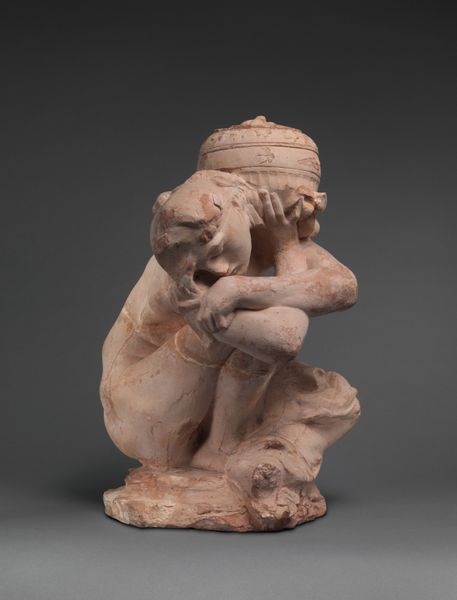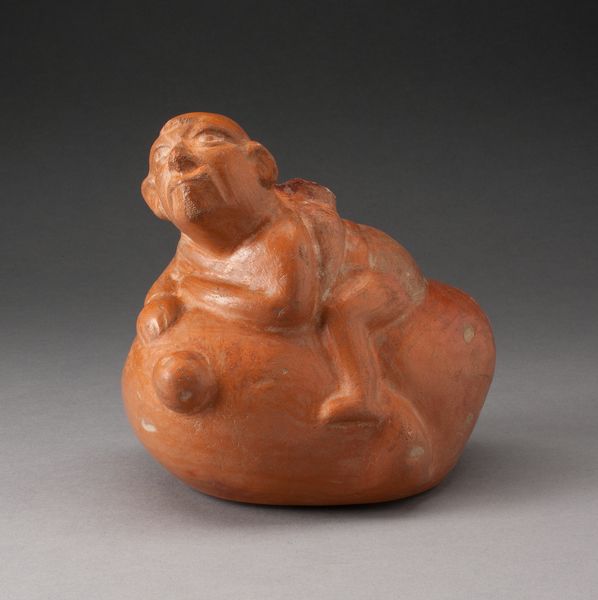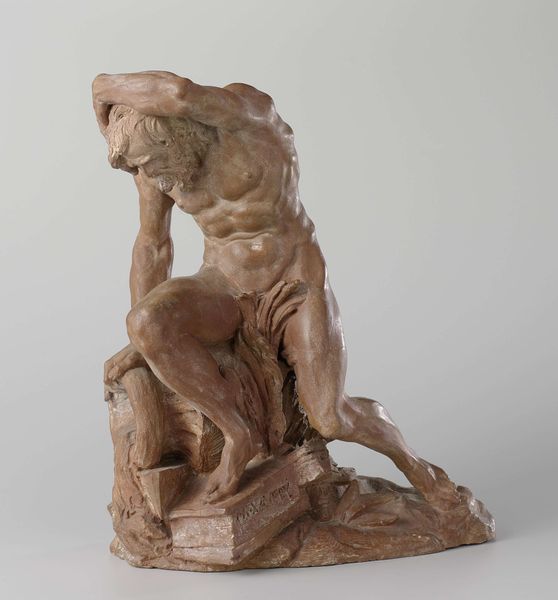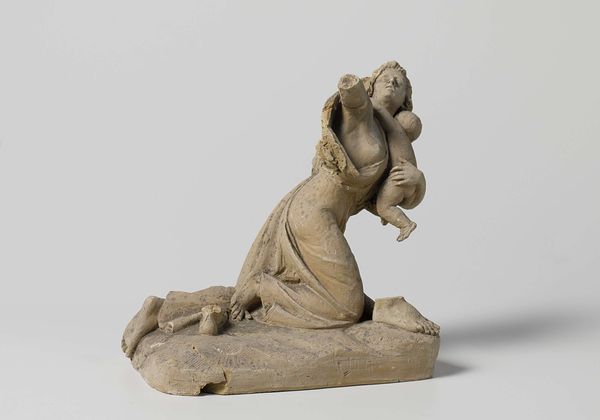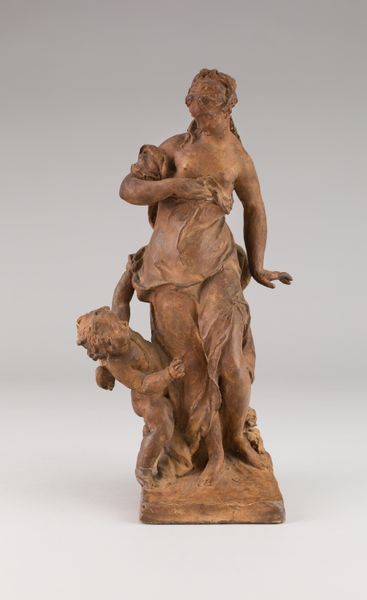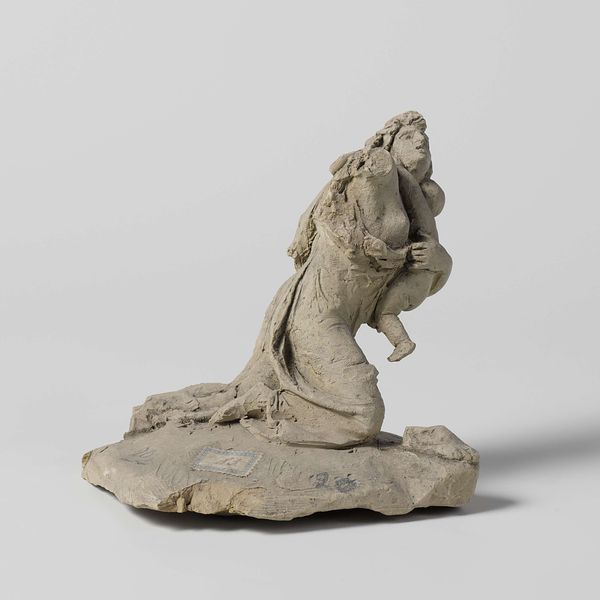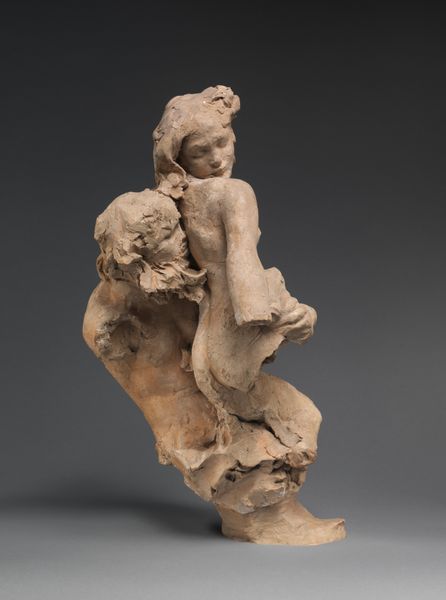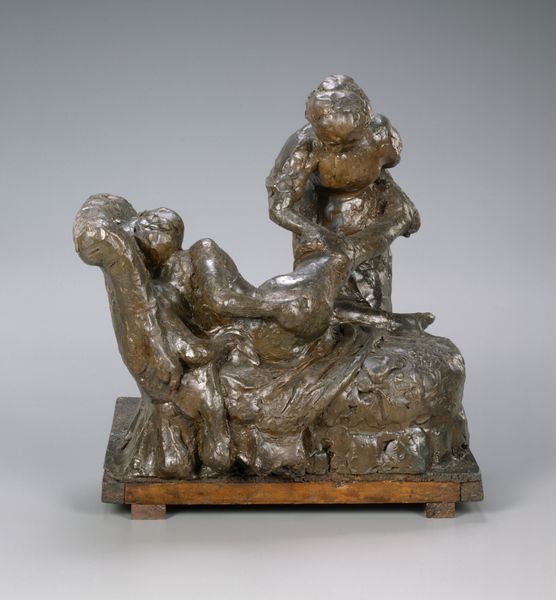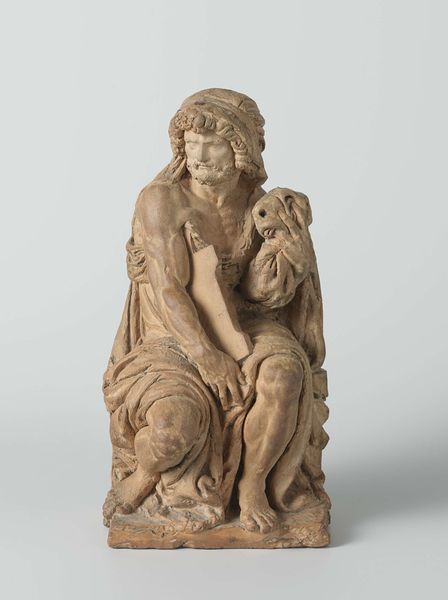
Terracotta vase in the form of a pygmy carrying a dead crane 299 BC
0:00
0:00
sculpture, terracotta
#
portrait
#
sculpture
#
figuration
#
ancient-mediterranean
#
sculpture
#
terracotta
Dimensions: H. 3 1/4 in. (8.3 cm)
Copyright: Public Domain
Curator: This is a terracotta vase, crafted around 299 BC. Its title is "Terracotta vase in the form of a pygmy carrying a dead crane." You can find it here at the Metropolitan Museum of Art. What strikes you most about it? Editor: It feels immediately melancholic. The weight of that crane seems to visually compress the figure. It’s a stark image, even across millennia. Curator: Absolutely. The term "pygmy" here likely refers to the perception ancient Greeks had of groups living along the Nile. Considering this, and bearing in mind how classical art often idealized the human form, the sculpture presents a nuanced commentary on perceptions of race, gender, and status in ancient Greek society. How are we to read this figure, seemingly burdened by his prize? Editor: The fact that it is made of terracotta is vital. Terracotta was commonly used for everyday objects, not high art necessarily. Elevating this subject, the "pygmy" figure, through the labor involved in creating the mold and the firing process, highlights both the physical demands on laborers and the economic framework that enabled this craft production. What was the intended function of the piece? Curator: It served as a vase, speaking to its intended domestic use and placing it within the everyday lives of those in the Hellenistic period. There's a complexity in viewing it. On one hand, it presents potentially reductive imagery, reinforcing stereotypes. On the other, its very existence within a sphere of art forces us to question these power dynamics, prompting viewers across centuries to examine those narratives. The social contexts are what truly resonate. Editor: I agree. Thinking about where the clay was sourced, who molded it, the technology involved in firing—these considerations are integral to understanding the piece. It transcends mere representation to become an artifact loaded with social history. The craftsmanship involved belies the social status the sculpture presents, in turn highlighting potential cultural biases from that era. Curator: It pushes us to explore the layers of meaning inherent within the depiction itself, to contextualize the narratives in intersectional ways. We need to remain self-critical in how we assign labels in current times, when the intentions are opaque from history. Editor: A somber piece indeed. The interplay between the subject, its intended function as an everyday vase, and the labor involved, crafts a piece laden with profound context.
Comments
No comments
Be the first to comment and join the conversation on the ultimate creative platform.
